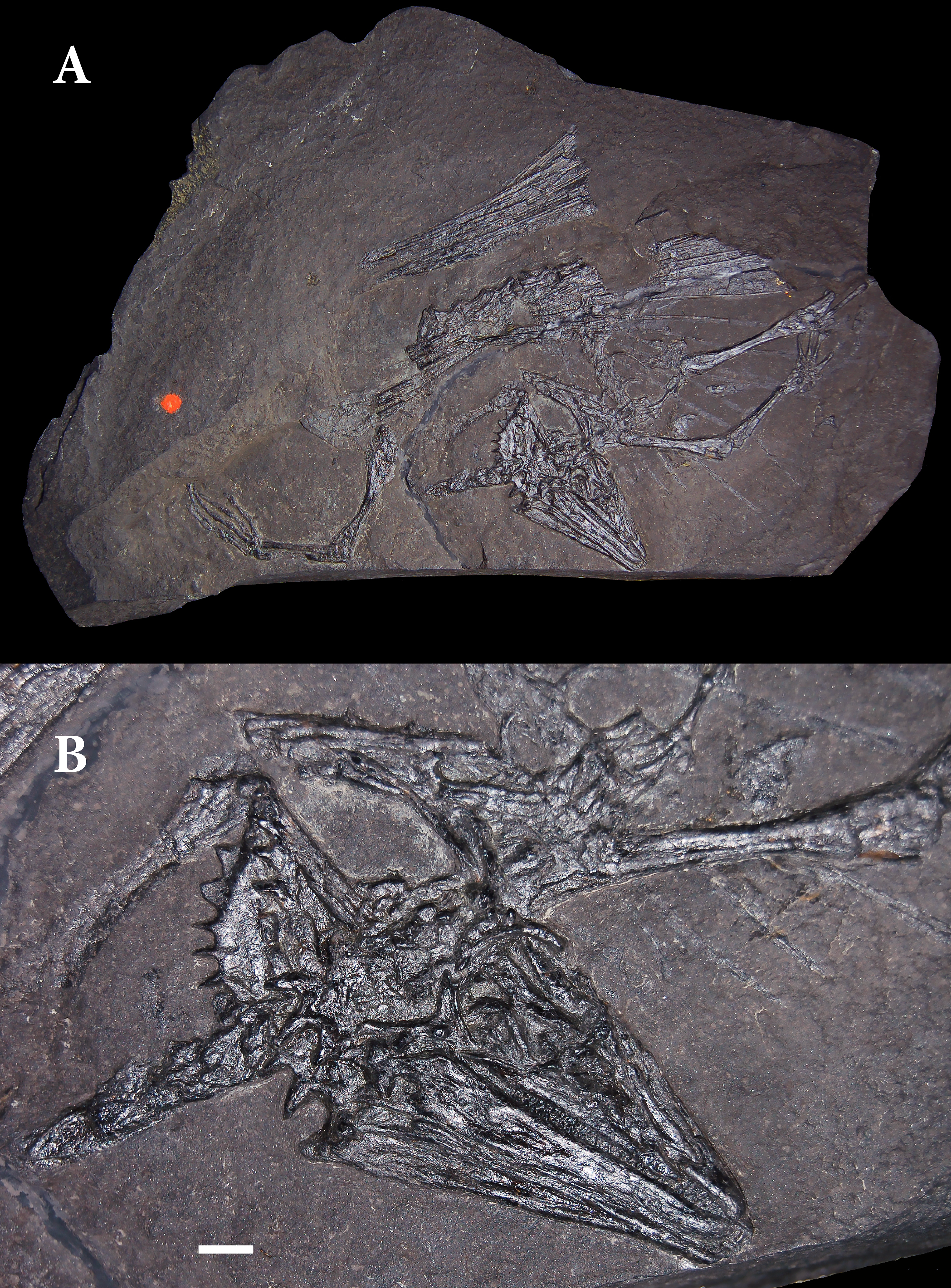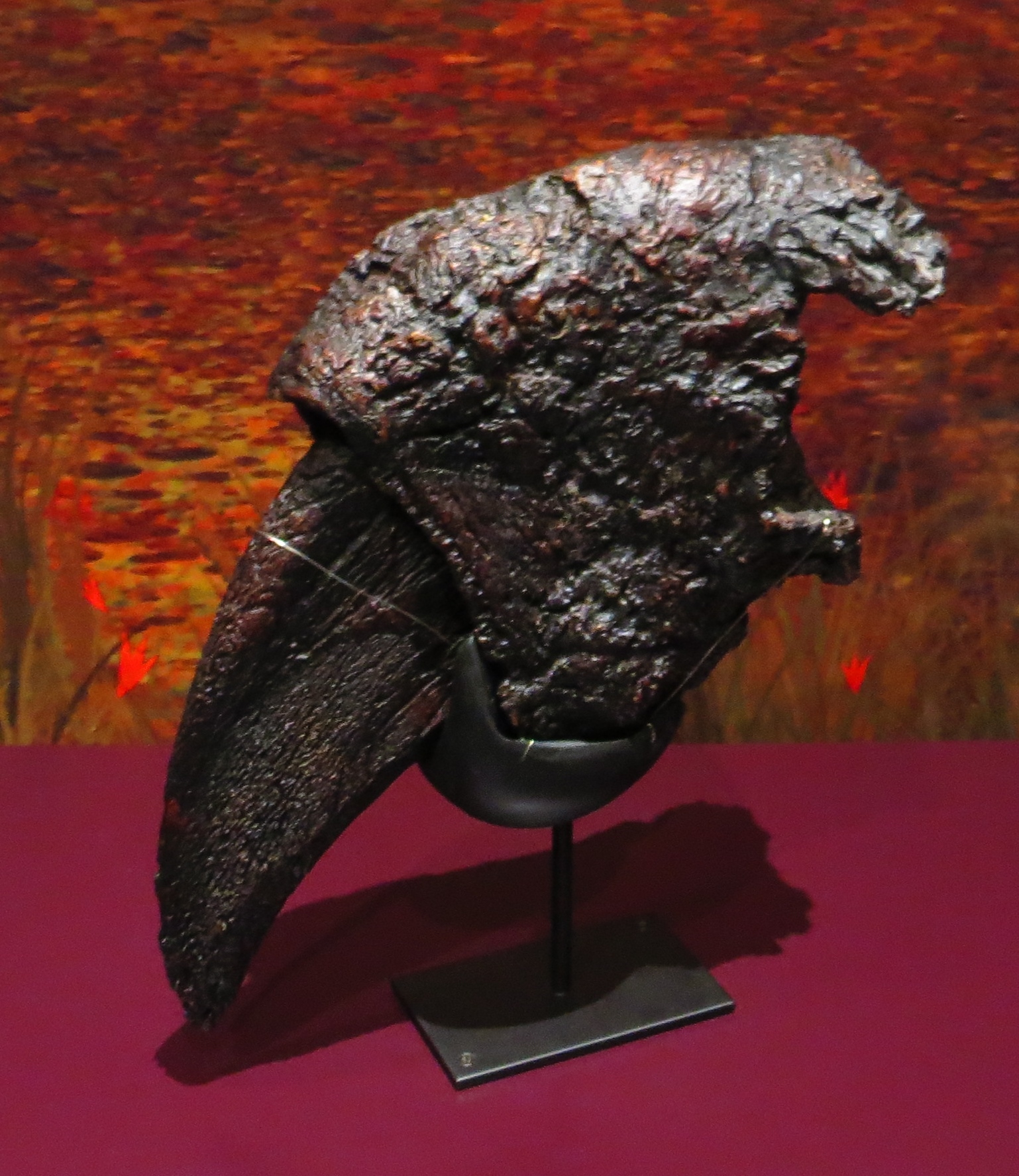|
Coelurosauravus
''Coelurosauravus'' (meaning "hollow-tailed lizard grandfather") is an extinct genus of gliding reptile, known from the Late Permian of Madagascar. Like other members of the family Weigeltisauridae, members of this genus possessed long, rod-like ossifications projecting outwards from the body. These bony rods were not extensions of the ribs but were instead a feature unique to weigeltisaurids. It is believed that during life, these structures formed folding wings used for gliding flight, similar to living gliding '' Draco'' lizards. ''Coelurosauravus'' is solely known from the type species, ''C. elivensis'', which was named by Jean Piveteau in 1926 based on fossils from the Lower Sakamena Formation of Madagascar. The species '' Weigeltisaurus jaekeli'' from Europe was formerly considered a species of ''Coelurosauravus'', but is now placed in its own genus. History of discovery The only known specimens of ''Coelurosauravus'' were collected in 1907-1908 by J.-M. Colcanap, a cap ... [...More Info...] [...Related Items...] OR: [Wikipedia] [Google] [Baidu] |
Weigeltisaurus
''Weigeltisaurus'' is an extinct genus of weigeltisaurid reptile from the Late Permian Kupferschiefer of Germany and Marl Slate of England. It has a single species, originally named as ''Palaechamaeleo jaekeli'' in 1930 and later assigned the name ''Weigeltisaurus jaekeli'' in 1939, when it was revealed that ''Palaeochamaeleo'' was a preoccupied name. A 1987 review by Evans and Haubold later lumped ''Weigeltisaurus jaekeli'' under ''Coelurosauravus'' as a second species of that genus. A 2015 reassessment of skull morphology study substantiated the validity of ''Weigeltisaurus'' and subsequent authors have used this genus. Like other Weigeltisaurids, they possessed long rod-like bones that radiated from the trunk that were likely used to support membranes used for gliding, similar to extant '' Draco'' lizards. History of discovery The first remains of ''Weigeltisaurus jaekeli'' were described by Johannes Weigelt in 1930 from a specimen (SSWG 113/7) found in the Kupferschiefer n ... [...More Info...] [...Related Items...] OR: [Wikipedia] [Google] [Baidu] |
Weigeltisauridae
Weigeltisauridae is a family of gliding neodiapsid reptiles that lived during the Late Permian, between 259.51 and 251.9 million years ago. Fossils of weigeltisaurids have been found in Madagascar, Germany, Great Britain, and Russia. They are characterized by long, hollow rod-shaped bones extending from the torso that probably supported wing-like membranes. Similar membranes are also found in several other extinct reptiles such as kuehneosaurids and '' Mecistotrachelos'', as well as living gliding lizards, although each group evolved these structures independently. Skeleton The skulls and jaws of weigeltisaurids are ornamented with horns and tubercles, including chameleon-like frills. The torso and limbs are slender. The skeletons of weigeltisaurds are lightened by large air spaces (skeletal pneumaticity) within the bones. The phalanges of the hands and feet are elongate contrasting strongly with those of most other primitive diapsids, but are similar to those of modern arbor ... [...More Info...] [...Related Items...] OR: [Wikipedia] [Google] [Baidu] |
Sakamena Formation
Sakamena is a village near Betroka in the region of Anosy in Madagascar. Sakamena is also the name of a Permian sedimentary geological formation that has yielded many vertebrate fossil, including Triadobatrachus ''Triadobatrachus'' is an extinct genus of salientian frog-like amphibians, including only one known species, ''Triadobatrachus massinoti''. It is the oldest member of the frog lineage known, and an excellent example of a transitional fossil. I ... (the first lissamphibian), Claudiosaurus, one of the first aquatic reptiles, and the Coelurosauravus, the first gliding reptile. Sakamena is also the name of a coal field that lies near the Sakoa coal field. Both the Sakamena and Sakoa coal fields are under appraisal and development by Madagascar Consolidated Mining, a subsidiary of Red Island Minerals, a company founded by Sam Malin. Other coal fields adjacent to the Sakamena region include the Ianapera, Imaloto and Vohibory fields. References Wild Madagascar Popu ... [...More Info...] [...Related Items...] OR: [Wikipedia] [Google] [Baidu] |
Glaurung (reptile)
''Glaurung'' is an extinct genus of weigeltisaurid reptile from the Upper Permian of Germany. The only known species is ''Glaurung schneideri''. Originally considered a specimen of ''Coelurosauravus'', a later study named it as a new genus after noting that it had several unique characteristics relative to other weigeltisaurids. These characteristics included a low skull, small eyes, smooth parietal and squamosal bones, and spiny jugal bones. Discovery ''Glaurung schneideri'' is known from a slab and counterslab discovered in 2002 by fossil collector Thomas Schneider. It was found in Late Permian Kupferschiefer sediments near Mansfeld, Germany. Although the original specimen remains in Schneider's private collection, there are several casts in European museums, such as MBR 3610 (stored at the Museum fur Naturkunde in Berlin) and PIN 5392/1 (stored at the Paleontological Institute in Moscow). The specimen consists of a flattened skull as well as material from the pectoral g ... [...More Info...] [...Related Items...] OR: [Wikipedia] [Google] [Baidu] |
Lake Tanganyika
Lake Tanganyika ( ; ) is an African Great Lakes, African Great Lake. It is the world's List of lakes by volume, second-largest freshwater lake by volume and the List of lakes by depth, second deepest, in both cases after Lake Baikal in Siberia. It is the world's longest freshwater lake. The lake is shared among four countries—Tanzania, the Democratic Republic of the Congo (the DRC), Burundi, and Zambia—with Tanzania (46%) and the DRC (40%) possessing the majority of the lake. It drains via the Lukuga River into the Congo River system, which ultimately discharges at Banana, Democratic Republic of the Congo into the Atlantic Ocean. Geography Lake Tanganyika is situated within the Albertine Rift, the western branch of the East African Rift, and is confined by the mountainous walls of the valley. It is the largest rift lake in Africa and the second-largest freshwater lake by volume in the world. It is the deepest lake in Africa and holds the greatest volume of fresh water on the ... [...More Info...] [...Related Items...] OR: [Wikipedia] [Google] [Baidu] |
Equisetales
Equisetales is an order of subclass Equisetidae with only one living family Family (from ) is a Social group, group of people related either by consanguinity (by recognized birth) or Affinity (law), affinity (by marriage or other relationship). It forms the basis for social order. Ideally, families offer predictabili ..., Equisetaceae, containing the genus '' Equisetum'' (horsetails), as well as a variety of extinct groups, including the tree-like Calamitaceae. Classification In the molecular phylogenetic classification of Smith et al. in 2006, Equisetales, in its present circumscription, was held to be the sole member of class Equisetopsida. The linear sequence of Christenhusz et al. (2011), intended for compatibility with the classification of Chase and Reveal (2009) which placed all land plants in Equisetopsida, made it the sole member of subclass Equisetidae, equivalent to Smith's Equisetopsida. The placement of Equisetales in subclass Equisetidae has subsequently ... [...More Info...] [...Related Items...] OR: [Wikipedia] [Google] [Baidu] |
Rift Valley
A rift valley is a linear shaped lowland between several highlands or mountain ranges produced by the action of a geologic rift. Rifts are formed as a result of the pulling apart of the lithosphere due to extensional tectonics. The linear depression may subsequently be further deepened by the forces of erosion. More generally the valley is likely to be filled with sedimentary deposits derived from the rift flanks and the surrounding areas. In many cases rift lakes are formed. One of the best known examples of this process is the East African Rift. On Earth, rifts can occur at all elevations, from the sea floor to plateaus and mountain ranges in continental crust or in oceanic crust. They are often associated with a number of adjoining subsidiary or co-extensive valleys, which are typically considered part of the principal rift valley geologically. Earth's rift valleys The most extensive rift valley is located along the crest of the mid-ocean ridge system and is the result ... [...More Info...] [...Related Items...] OR: [Wikipedia] [Google] [Baidu] |
Ungual
An ungual (from Latin ''unguis'', i.e. ''nail'') is a highly modified distal toe bone which ends in a hoof, claw, or nail. Elephants and ungulates have ungual phalanges, as did the sauropod Sauropoda (), whose members are known as sauropods (; from '' sauro-'' + '' -pod'', 'lizard-footed'), is a clade of saurischian ('lizard-hipped') dinosaurs. Sauropods had very long necks, long tails, small heads (relative to the rest of their b ...s and horned dinosaurs. A claw is a highly modified ungual phalanx. As an adjective, ungual means ''related to nail'', as in ''periungual'' (around the nail). References External links Mammal anatomy {{animal-anatomy-stub ... [...More Info...] [...Related Items...] OR: [Wikipedia] [Google] [Baidu] |
Wing Loading
In aerodynamics, wing loading is the total weight of an aircraft or flying animal divided by the area of its wing. The stalling speed, takeoff speed and landing speed of an aircraft are partly determined by its wing loading. The faster an aircraft flies, the more its lift (force), lift is changed by a change in angle of attack, so a smaller wing is less adversely affected by Wind gust, vertical gusts. Consequently, faster aircraft generally have higher wing loadings than slower aircraft in order to avoid excessive response to vertical gusts. A higher wing loading also decreases maneuverability. The same constraints apply to winged biological organisms. Range of wing loadings Effect on performance Wing loading is a useful measure of the stalling speed of an aircraft. Wings generate lift owing to the motion of air around the wing. Larger wings move more air, so an aircraft with a large wing area relative to its mass (i.e., low wing loading) will have a lower stalling speed. ... [...More Info...] [...Related Items...] OR: [Wikipedia] [Google] [Baidu] |




